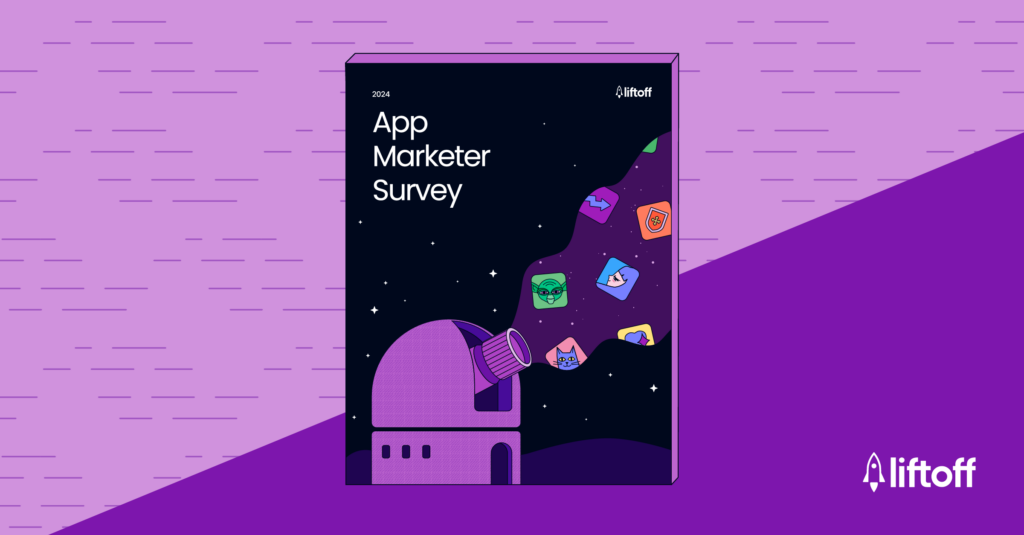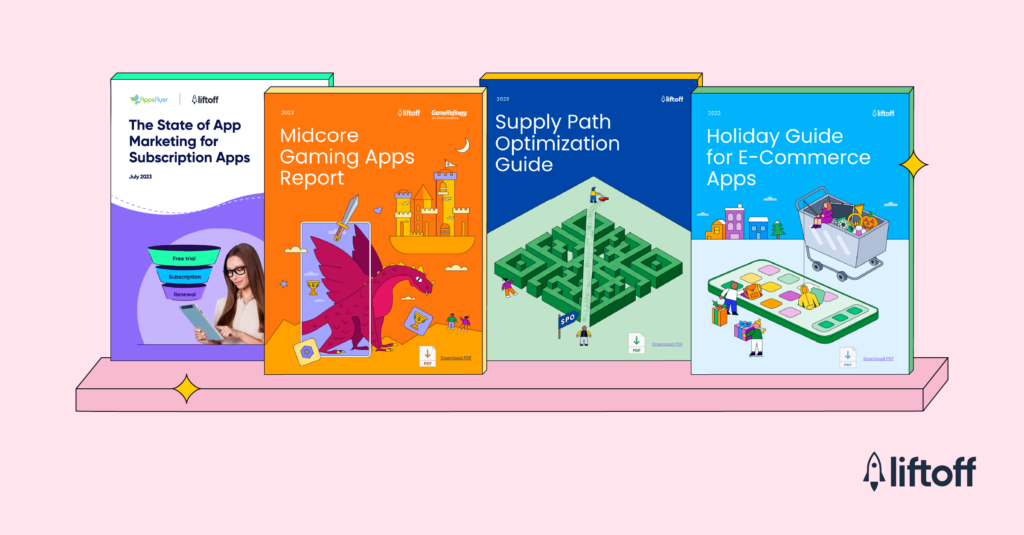
19 Tips and Tricks From Liftoff’s 2023 Mobile Heroes
It’s a new year for mobile marketers, which means a new set of challenges to overcome. Our Mobile Heroes have got you covered if you’re looking for guidance. Over the past 12 months, this global community of over 3,600 app marketers, monetization experts, and game developers spread across the mobile ecosystem have been sharing their best bits of mobile marketing advice with us, from how to design attention-grabbing creative to top-notch testing strategies and networking tips.
Below, we dive into some of our Mobile Heroes’ most insightful recommendations, bringing together the wisdom of knowledgeable industry experts like Janice Gao, Director of Growth Marketing at Big Fish Games, Paula Neves, Senior Product Manager at Zynga, and Winnie Wen, VP of User Acquisition at Jam City.
General mobile marketing wisdom
It doesn’t matter what your specialty is; these bits of Mobile Hero wisdom are something anyone in the industry could benefit from taking on board.
Trust your team
Mobile marketers have their work cut out, with UA costs rising and fierce competition. Thankfully, there are some steps you can take to make life easier. Jam City’s Winnie Wen says one of the easiest mistakes to avoid is doing everything independently—put your faith in your team and work together to achieve results.
“One of the more challenging parts of our jobs is letting go and entrusting others to take on various projects and initiatives. I know my team is fully capable and will crush it, but it’s easy to stretch yourself too thin and try to tackle everything firsthand. That just simply isn’t feasible in today’s environment.” — Winnie Wen, VP of User Acquisition
Working with creators? Then embrace authenticity
With TikTok skyrocketing in popularity over the last couple of years, it’s no surprise that many mobile marketers have been turning to influencers to supercharge their UA campaigns. This can be an effective combo, but it’s important to note that you should embrace the same aesthetic when you work with UGC creators to make ads.
“UGC ads don’t need to feel like polished brand commercials. Instead, lean into the rough social media vibe that makes the creator seem trustworthy and familiar. It’ll lead to longer video completion rates and increased conversions.” — Nicole Danser, Senior Manager of Creative Strategy and Production, Influence, at Liftoff
Unlock the power of automation and AI
The advancements in generative AI and automation over the past year have turned these two technologies into hot topics among mobile marketers. The only thing is that many marketers still haven’t yet figured out how to utilize these tools to their full potential.
Harry Phillips, Creative Strategist at Product Madness, worked with ChatGPT itself to come up with a few ideas:
- “One of the most significant advantages of using automation and AI in mobile marketing is the ability to personalize the user experience. By collecting data on users’ behavior and preferences, companies can tailor their marketing messages to specific audience segments, leading to higher engagement rates.”
- “Predictive analytics can be used to analyze user behavior and predict which users are most likely to take a specific action. For example, a mobile game could use predictive analytics to identify users likely to make an in-app purchase and target them with special offers.”
- “Dynamic creative optimization (DCO) is a process that uses AI to optimize the content of a marketing message in real time. This allows companies to test and refine their messages based on performance, leading to higher engagement rates and conversions.”
Tips to supercharge your creative
With so much competition on the market, throwing everything you’ve got into your ad creative can be tempting. These tips demonstrate the value of a considered approach that values simplicity above all else.
Keep your ads simple with the three Ws
Users spend hours browsing their phones every day and will naturally encounter hundreds, if not thousands, of different ads. Your ads must be simple and straight to the point to grab their attention quickly. Christian Gaitan from Banza makes this simple with three easy-to-follow guidelines.
- Who am I speaking to? Make the name, log, and brand visible.
- What am I saying? The message must be clear and concise, as in not too wordy.
- Why should they listen to me? Calls to action should align with user expectations.
Create compelling visuals, copy, and CTAs
While keeping things simple is essential, you must also use impactful copy, visuals, and CTAs to get noticed. Lomit Patel from Tynker laid out some sound principles to follow:
- Aim to achieve a seamless experience from the ad to the landing page. Website content should carry the same look and feel as the ad.
- Use simple images that are easy for the eye to recognize. Never use images to fill space and ensure they visually communicate the copy.
- Design your creative with clearly defined borders, which draws visitors’ eyes to the ad. The color scheme should also reflect your brand guidelines and landing pages.
- Too much copy can be overwhelming, and most users won’t read it. Take your cue from billboards, which limit themselves to eight easily readable words.
- Limit your typography to two fonts per ad and only bold vital information.
Update your funnel to improve CVR and ROI
Do you have an ad with excellent CTR, but needs help regarding its conversion rate (CVR) and ROI? According to mobile hero Thomas Hopkins, the likely issue is that you haven’t updated your funnel to capitalize on the users who have shown an interest.
“Imagine waking down the street and seeing an acrylic electric guitar that catches your eye. But when you enter the store, there are only traditional acoustic guitars. You’ll immediately turn around and walk out. This happens when your funnel does not align with your ad.” — Thomas Hopkins, Growthops.us
Highlight rewards and drive home your app’s value prop
One factor that helped Rei do Pitaco’s Performance Marketing Coordinator Pedro Lucina improve user acquisition was spotlighting rewards. Lucina states each business must present its key value or core benefit to the user. When allowed to experiment with creative, you should review how you highlight your main benefits, as you’ll likely see higher UA numbers if these haven’t yet been placed front and center.
Meaningful metrics and user motivations
Mobile marketers spend hours analyzing spreadsheets. Even so, seeing the forest (solution) for the trees (data) can sometimes be challenging. Thankfully, these tips highlight some areas where important patterns often go amiss.
Estimate for incrementality
Performance marketers maximize business volume metrics by matching efficiency and budget constraints. A business volume metric—revenue, gross margin, or active users—usually comes from an attribution model that uses a rule to split the total volume across different marketing channels. Unfortunately, attribution rules don’t fully explain what part of sales happens because of ads.
What can help, however, is having an estimate for incrementality, which is the volume that would vanish from your company’s total numbers if paid was turned off. For example, suppose attributed sales are above incremental ones. In that case, the actual CPA will be higher than what the company sees in its reports. — Guilherme Ude Braz, Marketing Senior Director at Mercado Libre
Overcome privacy regulations through user motivations
In the past, successfully managing a creative framework was highly dependent on understanding user data. Still, the changes to privacy regulations have restricted the level of information available to mobile marketers. Instead, results now hinge on knowing what motivates users to keep playing.
“Understanding demography and player motivations helps us develop in-game concepts that tie directly into what our users care about. What do they enjoy most about each level? What are the features that stand out most to each user? Those are the product aspects we should integrate into our thinking; it should be more than just marketing.” — Janice Gao, Director of Growth Marketing at Big Fish Games
Don’t forget about ARPU
“Tracking average revenue per user (ARPU) allows advertisers to identify the maximum CPI they can afford to pay for a user, compare revenue performance across different user segments, and improve monetization strategies accordingly. By monitoring changes in ARPU over time, advertisers can evaluate the impact of updates, events, promotions, or different tests on user buying behaviors and make decisions based on the increase in the revenue per user.” — Plamen Stefanov, User Acquisition Manager at Tactile Games
Consider targeting broader markets and regions
“Busy markets such as the US and Europe are first on the list for many mobile marketers but aren’t always the most economical options. LATAM represents an excellent opportunity for marketers as one of the largest single markets in the world, with a massive number of people purchasing on mobile in games, e-commerce, and other categories.
“However, marketers should be wary of the costs, as the quality of users can be lower in terms of value even though it’s cheaper. Don’t make apples-to-apples comparisons with other markets; factor in the quality of the user into performance analysis.” — Eduardo London, Head of Growth, International B2C, at Hopper
Never underestimate the value of testing
If there’s one thing our Mobile Heroes like to do above all else, it’s tests—and no, we’re not talking about a midterm exam. Testing and iterating have been the key drivers behind the success of many of our Heroes, and below, they explain some of their biggest takeaways.
Test to understand your target audience better
Understanding your user’s motivations is the key to long-term engagement. Work closely with your data analysts to look at data and understand why players are responding to certain features and updates in a certain way, then look at how you can put these insights to the test to improve the overall user experience.
“The data shows you what is happening but doesn’t always show you why. Sometimes, you need to do additional tests, like user tests, to show you exactly why the data is going that way.” — Paula Neves, Lead Product Manager at Zynga
Testing should be ongoing—never one-and-done
“As a best practice, you should A/B test different creative formats, messages, CTAs, images, or videos to determine the best-performing ads for the different target audiences at various stages of their customer journey. Iterate on the winning ads by creating slight variations, then rinse and repeat the tests on an ongoing basis.” — Lomit Patel, Chief Marketing & Growth Officer at Tynker
Enhance testing strategies using new products and tools
Natalia Simdianova, Head of Ad Monetization at ZiMAD, recommends digging into advanced bidding solutions to determine the best structure for your business and its A/B testing. She notes that while a hybrid waterfall setup (a traditional waterfall combined with an advanced bidding slot) can sometimes work for one network, it may not work for others. Try different configurations to find a win-win structure.
She also says: “To meet company KPIs, monetization managers must also use various analytics tools to find areas for optimization. The digital revolution has had a profound impact on our daily routine. We can now capture and process data in real-time—or close to it. Google Analytics, Firebase, and Looker Studio Analytics can offer insights into monetization issues.”
Define your process and test with a purpose
You must have a clear goal and process when testing ad creatives. Concepts are helpful because they define new ideas to test. When you find creative concepts that demonstrate success, focus on iteration—improving them by making small changes.
“When I first started working on creatives, I experimented with as many ad categories, formats, types, and visual elements as I could. After a few months of research and conversations with my colleagues, my team and I streamlined the process by dividing everything into concepts and iterations. This not only made the experience of working together more organized, but it also impacted campaign performance.” — Pedro Lucina, Performance Marketing Coordinator at Rei do Pitaco
Testing is key for UGC
Influencers can develop concepts that even seasoned brand marketers would never have conceived when given the freedom to do what they do best. According to Nicole Danser, Senior Manager of Creative Strategy and Production, Influence, at Liftoff, this is why testing is so important:
“Try out a few different styles of ads and types of creators at once—top performers will quickly emerge that will provide invaluable insights into how to iterate and improve. In addition, be open to testing new formats. Skit-style videos, dancing trends, and pointing to text boxes with an engaging beat drop all may seem unusual for UA, but give them a try. These styles are familiar to the average consumer, so their performance can surprise you.”
The power of partnerships
Teamwork is vital for success on mobile, and we’re not just referring to those colleagues sitting near your desk. Having the right ad partners behind you can transform your strategy into a record-breaking success. These tips show you how to get started.
Leverage your networking skills whenever possible
You should be prepared to communicate with all your mobile advertising sources, build relationships, and keep an open mind. Always be bold and learn something new from other professionals by asking questions and for more information.
“Building a robust network takes time, but there are plenty of social channels and networking opportunities to get in touch with people. To ensure success as a monetization manager in a dynamic environment, it is crucial to actively participate in panel discussions, register for webinars, and plan QBR (quarterly business review) calls with partners.” — Natalia Simdianova, Head of Ad Monetization at ZiMAD
Don’t underestimate the power of in-person meetings
Developing successful partnerships can lead to increased market share, expanded DAU and downloads, and better brand recognition, improving the bottom line—but this is often easier said than done. One of the best ways to develop good relationships with contacts is to put the time aside to meet in person. Attending industry events is an excellent way of doing this.
“If you’re struggling, the key thing to remember is that relationships take time. The COVID-19 pandemic put much more emphasis on Zoom, but I’d highly recommend meeting in person to build partnerships where possible. While you don’t need to share your life story, giving away some aspects of your personal life can also help make a connection outside of business.” — Gabby Bradford Pigott, VP of Partnerships at Candywriter
Proactively research your marketing partners
“Regardless of region, your first step as a marketer should be to find trusted partners. Be it CEOs, CMOs, or other marketer leaders, most people are happy to answer questions and give an honest response. However, it’s not enough to just rely on partners; always talk to other UA managers and get their thoughts about a specific partner or a new channel before laying out any formal agreements.” — Etienne de Guébriant, Chief Marketing Officer at Gazeus Games

